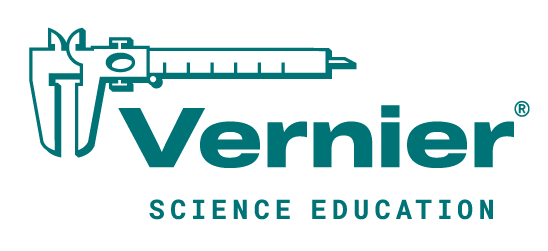Troubleshooting
General: Press the power button on the sensor to turn it on. Connect your sensor as described in the Getting Started instructions for your device. (The green LED will flash to indicate the sensor is connected.)
- Primary Test: Place the sensor over a sample containing 1% ethanol. The readings will rise within a minute to near 1%.
- Secondary Test: Verify that the sensor reads 0.01% or less in air after warming up for 5 minutes.
- Tertiary Test: Check the calibration screen to make sure the live reading is stable when not exposed to ethanol after warming up for 5 minutes.
Tips
- Did you allow the sensor to warm up? There is a 5 minute warm up period each time you turn the sensor on.
- Is your data collection time long enough? Diffusion of gases is a fairly slow process and there are delays in readings.
- Are you collecting in a controlled environment? Use the 250 mL Nalgene collection bottle and split stopper that is included with the sensor for best results.
- Is your expected concentration of ethanol too high for the sensor? If you are testing something with an expected ethanol concentration above 3%, dilute the sample before collecting.
Additional Troubleshooting
- Do the ethanol sensors need to warm up?
- Can Vernier ethanol sensors be used in liquid?
- Ethanol Sensor never reads zero.
- Do you have written instructions for experiments that use the Vernier ethanol sensors?
- How do I use the Ethanol sensor with a CO₂ Gas sensor to measure fermentation?
- Do I need to calibrate Vernier ethanol sensors?
- What is the range of the Vernier ethanol sensors?
- Can I use Vernier ethanol sensors to measure the amount of ethanol produced from a fermentation?
- Why does the split stopper not hold the shaft of the Go Direct Ethanol Vapor in place?
- Why does the Go Direct Ethanol Vapor read 100% after calibration?
- Go Direct sensor does not connect to LabQuest 2 via Bluetooth.
- How do I replace the battery in a Go Direct Wand-Style Sensor?
- Troubleshooting Bluetooth Connections with Go Direct Sensors
- What can I do if a Go Direct sensor's Bluetooth LED flashes red and green when I try to connect to it and the connection fails?
- Will my device work with Go Direct Sensors via Bluetooth?
- How do I know if my LabQuest will work with Go Direct Sensors and Go Wireless devices?
Specifications
- Range: 0% to 3%
- Response Time: 90% of full scale in 60 seconds (after initial warm up)
- Range: 0% to 3%
- Accuracy
⚬ Factory calibration: ±1.5% at 3%
⚬ Custom calibration (1-3%): ±0.5% at 3%
⚬ Custom calibration (0.1-1%): ±0.3% at 1% - Connections:
⚬ Wireless: Bluetooth® v4.2 (wireless range 30 m unobstructed)
⚬ Wired: USB 2.0 full speed - Battery: 650 mA Li-Poly
⚬ Battery Life (single, full charge): ~8 hours continuous data collection
⚬ Battery Life (lifetime): 2 – 5 years (typical)
Calibration
For experiments looking at rate of change, calibration is not necessary. For quantitative analysis, calibration is recommended. Use a two-point procedure for best results. See the user manual for how to prepare standards for calibration. See also, How do I calibrate my sensor?
Battery Troubleshooting
- If the sensor can be turned on when connected by USB but not when disconnected from USB, it is likely that the battery just needs to be charged.
⚬ Try charging the sensor for several hours. - If the sensor still won’t turn on when disconnected from USB, try swapping the battery with a working sensor to see if the problem follows the battery or stays with the sensor.
⚬ If the problem stays with the sensor, the battery is probably not the issue.
⚬ If the problem follows the battery, the battery has likely reached its end of life. - If you intend to use this sensor wirelessly, its battery will need replacing.
Go Direct® 650 mAh Replacement Battery (GDX-BAT-650 ) - See How do I replace the battery in a Go Direct Wand-Style Sensor? for more information (including a video).
Rechargeable batteries are covered by a one-year warranty.
Batteries should last two to five years in typical use.
Related Products
- Micro USB to USB-C Cable (
CB-USB-C-MICRO ) - Go Direct® Charge Station (
GDX-CRG ) - Electrode Support (
ESUP ) - Stir Station (
STIR ) - BioChamber 2000 (
BC-2000 ) - BioChamber 250 (
BC-250 ) - Grommets for CO2 Gas Sensor (
CO2-GROM ) - Ethanol Sensor (
ETH-BTA )
Replacement Parts
- Go Direct® 650 mAh Replacement Battery (
GDX-BAT-650 ) - Micro USB Cable (
CB-USB-MICRO ) - Ethanol Cap Assemblies (3) (
ETH-CAPS ) - #6 Stopper for Ethanol Sensor (
ETH-STOP ) - Tape for Ethanol Sensor (
ETH-TAPE ) - 250 mL Nalgene Bottle w/Lid (
CO2-BTL )

